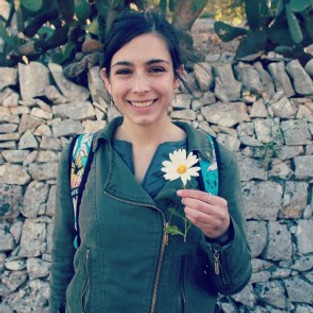The Wild Landscape of Puglia (Apulia)
- Sierra Busch

- Nov 8, 2018
- 3 min read
Updated: Sep 3, 2020

As a nature lover and artist, one thing I love about travel is experiencing different types of landscapes. I notice how the straight pine trees of the southern US become wild and craggy in southern Europe. I notice how the color palette of a place gets dustier, more saturated, or expands into a range of colorful minerals new to my painting vocabulary. And I notice the way tall mountains energize the “adventuress” in me, while flatlands gently sloping into the sea make me want to slow down and relax.
But let’s back up and get our bearings first, shall we? After all, the only reason you can spot Italy on the map is because it’s shaped like a boot, am I right? (Don’t worry, you’re not the only one.) Ok, now that I have your attention, let’s look at some maps to really understand where Puglia lies in relation to the rest of the world.
Where is Puglia (Apulia)?

Yes, I had to start this far out to be sure you know where you are: Earth. Ok but really, the blue dot on the left is Atlanta, GA while the red pin is set on the region of Puglia, Italy.

Here it is a bit closer. There’s a reason visitors say Puglia reminds them of Greece, it’s actually just a ferry-ride away. Some people are also surprised to realize that Italy is actually pretty close to Northern Africa.
I once met some of the most generous and kind people who had left their families in Egypt years ago to work in Italy and send money back to the children they never see. This immigration is a heated point of controversy in Italy.

Now we can really start to see where we are within Italy. Puglia makes up the “spur and heel” of Italy’s “boot”, with the Adriatic Sea to the east and Ionian Sea to the south.

The main city in Puglia is Bari, with Taranto, Lecce, Brindisi, and Foggia close behind. The most commonly visited cities are probably Ostuni, Monopoli, Alberobello, Gallipoli, and Lecce.
Geographical Features of Puglia (Apulia)

The western border of Puglia is made up of the Lucanian Appenine Mountains, part of a strip of mountains that go down the length of the country, often referred to as the “backbone” of Italy. These include low limestone plateaus.
The “spur” of the boot is an area known as Gargano, where local dialect is still very strong and villages have not entirely changed for tourism (if at all). Here, you’ll also find Gargano National Park, a protected area that includes the gorgeous Tremiti Islands, Foresta Umbra, and 60+ types of wild orchids (the largest concentration in Europe).
The coast here is also particularly beautiful, where white limestone cliffs fall dramatically into the Adriatic Sea and create a series of caves, inlets, natural arches, and hidden swimming spots.

South of Gargano, you’ll see mostly flat areas with occasional hilltops from which you can let your eye wander over the vast olive, citrus, and cherry groves, as well as vineyards. You’ll also spot the white, cone-shaped homes called trulli. As you get toward the bottom of the “heel”, the landscape changes to open grassy land gently rolling to the coast which is dotted by ruins of ancient forts and watchtowers.
(Read my post about the history of Puglia for more about that.) Southern Puglia doesn’t have the white-cliff beaches of Gargano, but it does have some amazing sea caves and water so clear that it has been nicknamed “the Maldives of Europe”.

When driving through Puglia, you’re likely to notice the deep red earth below ancient olive or almond trees. You’ll pass endless fields of vegetables grown in the iron-rich soil, such as artichokes, fava beans, carrots, and fennel, which are likely to show up on your dinner plate.
Another feature you’ll notice are the long, stone walls along the roads. These characteristic walls are built without using any masonry, just a traditional, tried-and-true stacking method.
Everywhere you go in Italy, the nature and landscapes are breathtaking. But in Puglia, I often find myself truly surprised by how unexpected and diverse the beauty is. There is always something new to discover!
When I lead our Secrets of Southern Italy small-group trip, I make sure to leave plenty of time for my 7 travel companions and I to slow down and enjoy the natural beauty, whether it’s with a Prosecco picnic on the beach or a hike to an ancient abandoned abbey!
If you’re interested in learning more about Puglia, check out my posts on the food, the history, or the top experiences you can’t miss!
Creative Edge Travel offers small group and custom trips to the lesser-known areas of Italy. Visit our Upcoming Trips page to see where we’re headed next!













